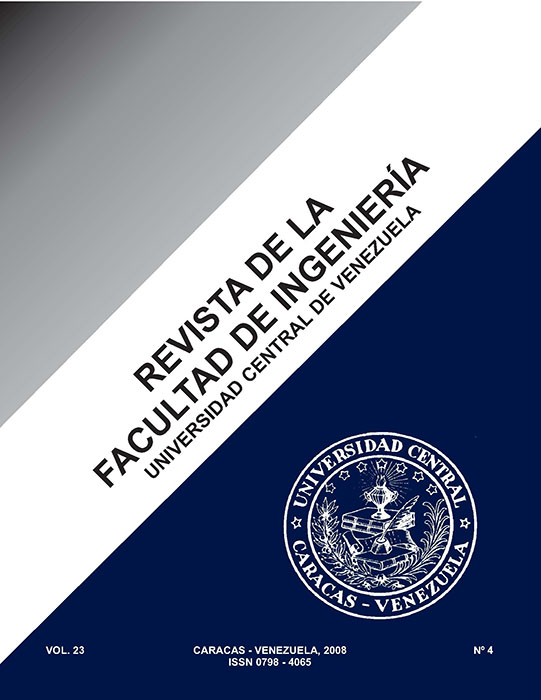PREPARACIÓN Y CARACTERIZACIÓN DE SOPORTES CATALÍTICOS ESFÉRICOS DE -ALÚMINA / Preparation and Characterization of Catalytic Supports -Alumina Granulate
Palabras clave:
Soportes catalíticos, Moldeado en aceite, Proceso sol-gel, Granulación, Pellas de γ- Al2O3.Resumen
El presente trabajo estudia el efecto que ejercen las características iniciales del hidróxido de aluminio y de las condicionesde moldeado sobre las propiedades texturales y mecánicas de soportes catalíticos esféricos de γ-alúmina. Los hidróxidosde aluminio de estructura pseudobohemita son obtenidos mediante el proceso de precipitación empleando como precursoresnitrato de aluminio nanohidratado (muestras BP) o gibbsita proveniente del proceso Bayer (muestras GL). La preparaciónde las pellas de alúmina de 1 - 3 mm de diámetro se realizó mediante el método de peletización y los métodos sol-gel -moldeado en aceite. Se estudiaron diversos parámetros que afectan el proceso de granulación. Los resultados indicaronque tanto las características iniciales de los hidróxidos de aluminio como las condiciones de moldeado tienen una graninfluencia sobre las propiedades finales de las pellas. El método de moldeado en aceite resultó ser mejor que el método depeletización. La cristalinidad inicial de los hidróxidos posee un efecto importante sobre el área superficial y la resistencia delos gránulos esféricos. Sistemas pobremente cristalizados permitieron obtener gránulos resistentes con altas áreassuperficiales específicas; mientras que el moldeado en aceite y la posterior coagulación afectaron en mayor medida laforma, firmeza y tensiones internas de las pellas.
ABSTRACT
The aim of this work is to study the effect of initial hydroxide properties and molding conditions on the desired sphericalshape, texture, structure, and mechanical properties of granular alumina (Al2O3). The aluminium oxyhydroxide of apseudoboehmite structure was obtained by precipitation, using as precursors, aluminium nitrate (sample BP) or gibbsiteobtained from the Bayer process (sample GL). Two methods were used to prepare the γ- Al2O3 granules. The first methodis based on the snowball effect (production of spheres by rotating dish granulator). The second method is a combinationof the sol-gel – oil drop process. Various parameters affecting the granulation process were studied. The results indicatedthat both the initial characteristics of the aluminium oxyhidroxide and the molding conditions have a great influence on thefinal properties of the pellets. The method γ- Al2O3 granular particles prepared by sol-gel – oil drop exhibit better texturaland mechanical properties than that of the rotation dish granulation method. The initial crystallinity of the hydroxide hadan important effect on the surface area and the resistance of the spherical granules. Poorly crystallized or highly amorphoussystems allowed us to obtain granules resistant and high specific surface areas; while the oil drop method affected to thelarger degree the form, stability and internal tensions of the pellets.Keywords: Catalytic support, Oil-drop, Sol-gel, Granulation, γ - Al2O3 pellets.



